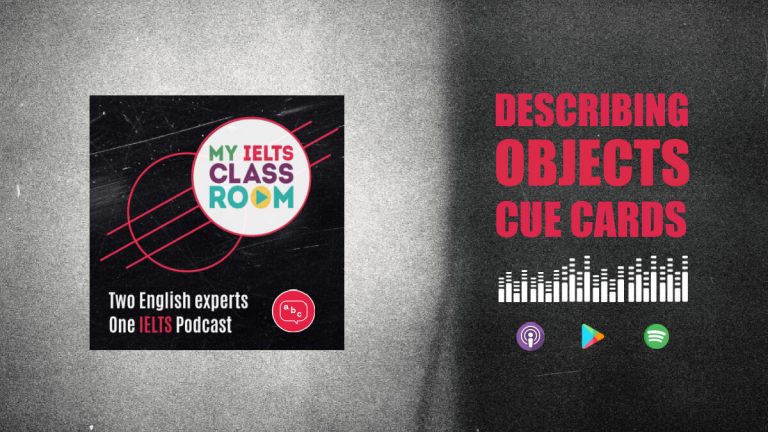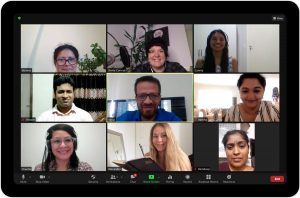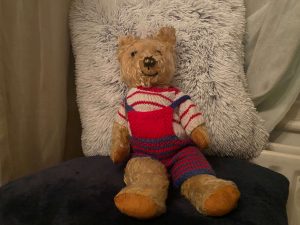
IELTS Object Cue Cards
Hey! This week, Nick and I look at how you should tackle IELTS Object Cue Cards, which are one of the most common in Part 2 of the exam. We will start with a brief review of IELTS Speaking Part 2 (as it has been a long time since we did a speaking episode!), and then share a range of useful lexis to describe objects. Finally, we will demonstrate how you can put all of these skills together by completing one 2-minute turn each.
Below, you can find a summary of the episode, which includes all of the links to useful materials and the times of each part of the discussion (so you can go directly to the part you want to listen to) 🚀
- Subscribe to My IELTS Classroom podcast on Apple podcasts here
- Subscribe to My IELTS Classroom on Google podcasts here
- Become a Patreon to gain access to extra BONUS episodes here

IELTS Speaking Part 2: The Basics
Although the focus of today’s lesson is how to tackle IELTS object cue cards, it has been a long time since we covered Speaking Part 2 in the podcast, so why don’t we check your current knowledge. You should know the answers to all of the following questions, but if you don’t, I recommend that you go back to one of our previous episodes to cover the basics before you complete this one.
- How long does IELTS Part 2 last?
- How long do you have to make notes?
- How long do you have to speak?
- Do you have to make notes before you speak?
- Do you have to cover all of the bullets in the two minutes?
- Is it OK if the examiner stops you before you finish answering the questions on the card?
- Can the examiner ever stop you before your 2 minutes are up?
- Do the examiners write your scores down at the end of this section?
- What are the follow up questions?
- How long should you spend answering these?
IELTS Object Cue Cards: An Introduction
The topics of the cue cards change every 6 months, but if you were to put all 50 current cue cards into categories, almost all of them would fall into nine simple groups. Today, we are going to look at one of the most common – IELTS object cue cards.
Like all cue cards, there are simple tricks that you can use to help you speak for two minutes when describing an object.
- You can focus on telling a story, which would mean giving background details at the start to give your description context.
- You should add details to give yourself the best chance of speaking for the full two minutes – this is often what students who lie lack.
- You should also remember to paraphrase if you get stuck on a particular word or phrase – far from being a negative, this will actually add to your score for Lexical Resource.
- You can switch to talk about a second item if you finish much too early – there is no penalty for this and it is often much easier to start describing a new object than finding more to say about the original one.
However, in my experience, the one thing that students forget to do when they are asked to talk about an object is describe the object itself. Not only does this mean that the student is missing out on the opportunity to score points for topic-specific lexis, but it also means that the student is more likely to end at around 1:30 rather than 2:00.
Why do students do this? Some may simply not think about physically describing the object they are talking about, but for many, it is because they do not have enough vocabulary. In fact,
I would say that the challenge of IELTS object cue cards is having enough vocabulary to describe an object accurately.
That is why, today, the majority of this podcast episode is dedicated to lexis. Nick and I will go through many of the different ways that you can describe objects, offering you various words and phrases that you may find useful. Obviously, the students who listen to our podcast are of varying levels, so we try to offer something for everyone.
Think of this episode like a buffet – you can eat what you fancy and leave what you don’t! Hopefully, there will be something for everyone!
If you need help with IELTS speaking, then why not consider signing up for one of our 5-day intensive speaking courses? They cover EVERY aspect of the exam over five 75-minute lessons and include personal feedback from a previous examiner. You can find out more here.

IELTS Object Cue Cards: Useful Lexis
Describing Shape
It’s + an adjective
- It’s round / circular / rectangular / triangular
Use approximate language
- It’s squarish / it’s roundish
- It’s kind of triangular
- It’s sort of like a diamond
- It’s roughly a square
Describing Materials
- It’s made of leather / wood / plastic / steel / gold / silver
- It’s cotton / wool / polyester / pottery
Describing Texture / Build
Learning opposites can be useful here:
- The table is really smooth / rough.
- The knife is sharp / blunt.
- The sofa is really soft / hard.
- The chair is really solid / flimsy.
- My new phone is very slim / chunky.
Describing purpose
It is used for + gerund
- It is used for measuring the distance to a hole in golf.
You use it to + infinitive
- You use it to measure your heartbeat when you exercise
Describing how you got the object
- I bought it in + shop / city
- I bought it in a street market when I was visiting Bangkok.
I was given it by X for my Y
- It was given to me by my parents for my 18th birthday.
I inherited it from Y
- I inherited it from my grandmother.
Describing the price of the object
- It was on sale / It was reduced / It was on special offer
- It was pretty cheap / It was fairly expensive
- I guess it is worth about $100.
- It just has sentimental value.
Describing specific items
- Watch: face / hands / strap
- Computer: keyboard / screen / touchpad
- Mobile Phone: 128GB memory / make and model (Apple 12)
- Jewellery: clasp / chain / ring / earrings
Nick and Shelly attempt IELTS Object Cue Cards
To end this lesson, Nick and I will both attempt to speak for 2 minutes about one of the following IELTS object cue cards. We did not prepare these examples, so you will get to see how a native speaker uses some of the lexis from today’s class in a natural way (I hope!)
Describe a personal possession that is important to you
You should say
– what the item is
– what it looks like
– where you keep it
and explain why the item is important to you

Describe an item that you bought but have not used very much
You should say
– what the item is
– why you bought it.
– why you have not used the item
and explain how you feel about not using the item very often
